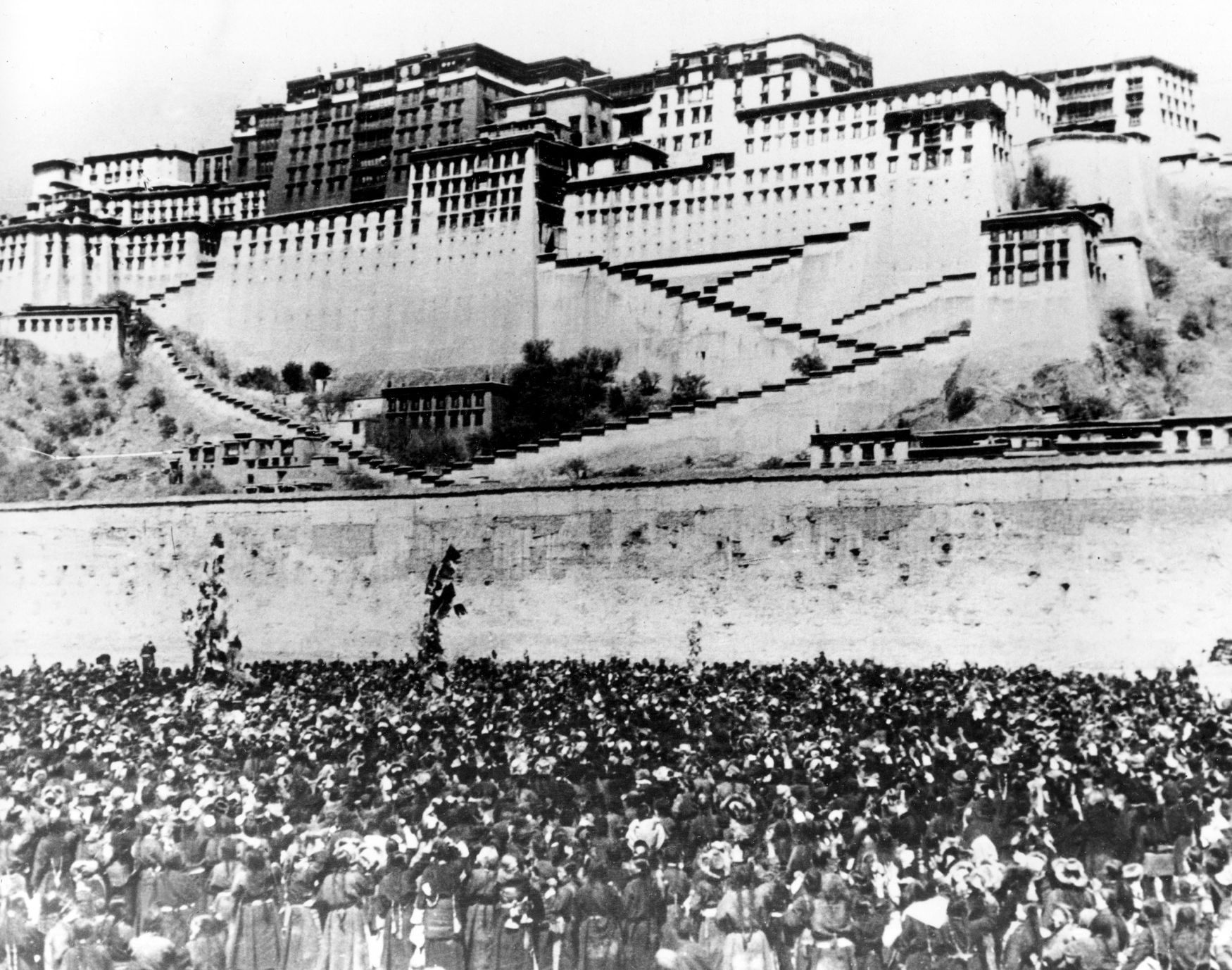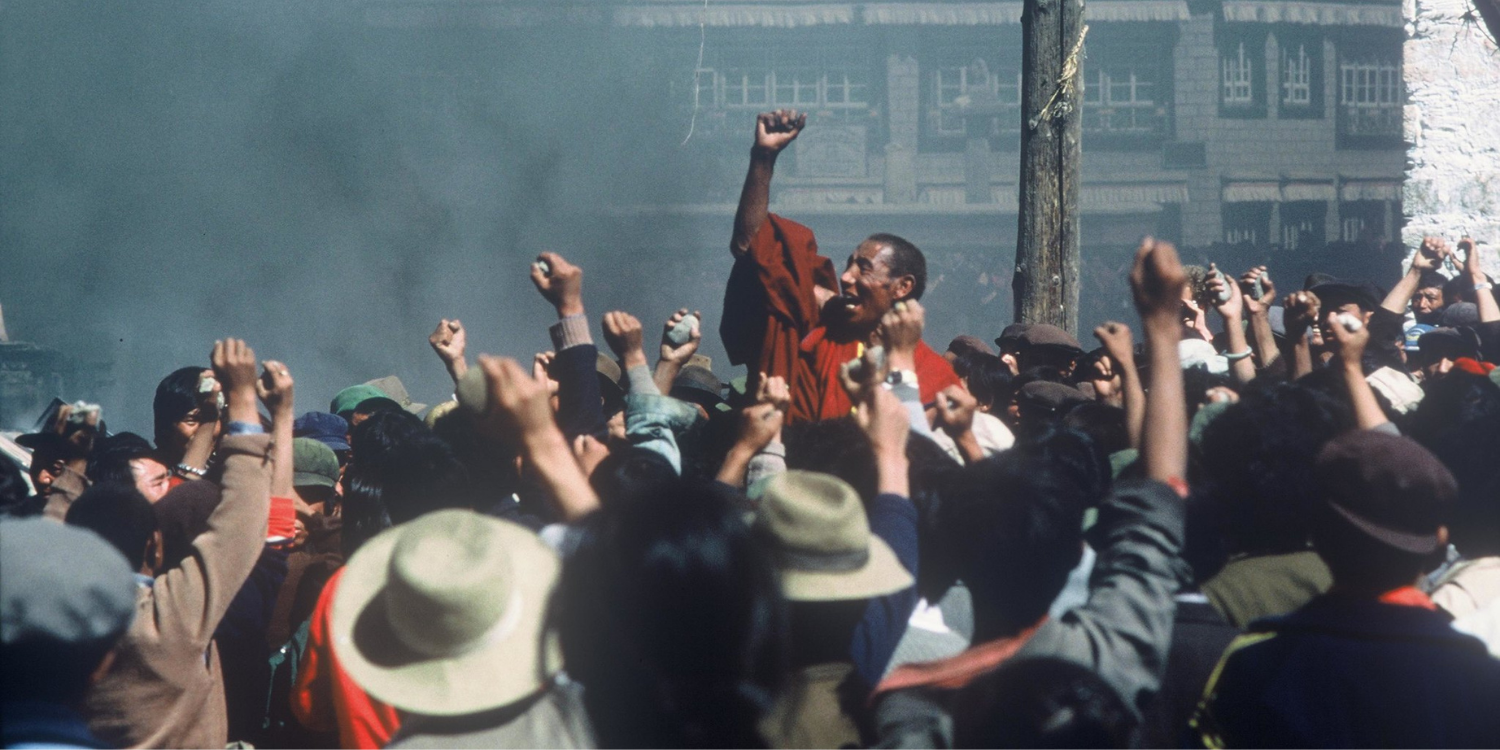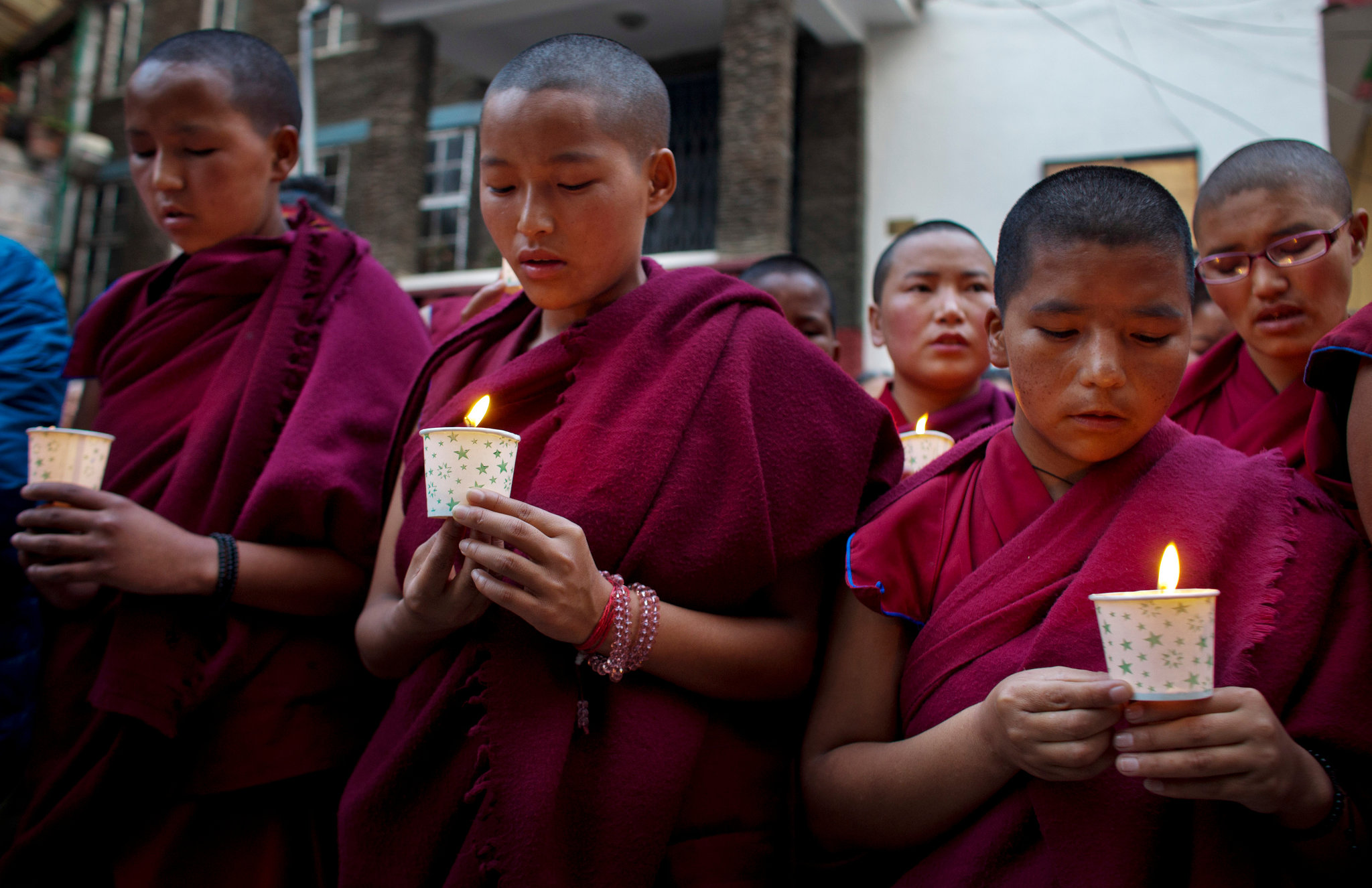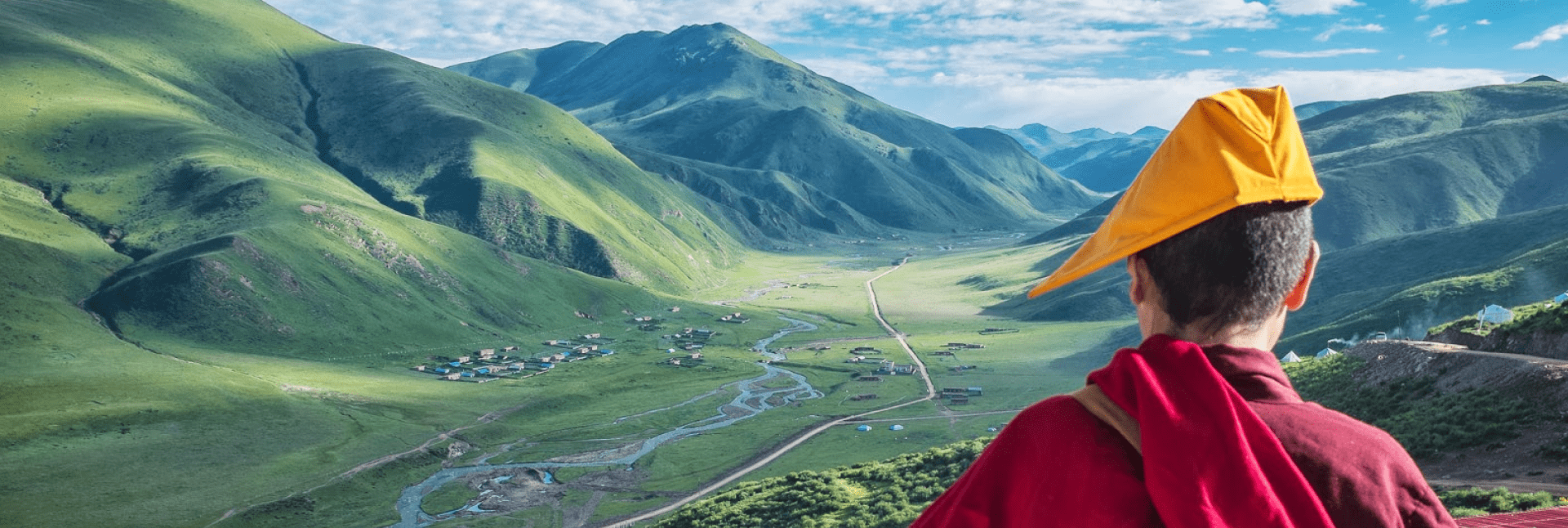Since the Chinese Communist Party’s (CCP) invasion in 1950, Tibetans have never stopped resisting the occupation.
In the face of oppression and authoritarianism, with the deck stacked against them, Tibetans continue to rise up against the CCP’s rule and assert their demands for freedom.
Today, this struggle is harder than ever. As the Chinese government adopts ever-more advanced technology and uses increasingly brutal tactics to crack down on dissent, a new generation of Tibetans – whose parents and even grandparents do not remember a life free of Chinese rule – are fighting back against all odds.
Tibet under Chinese occupation
As the CCP attempts to maintain its iron grip over Tibet, controlling the region’s vast resources as well as its people, Tibetan culture, religion, and language are being eroded to the point of extinction.
To fight back against this tide of Sinicization, Tibetans protest. From issues of environmental exploitation and nomadic displacement, to religious restrictions and oppressive policing, the Tibetan people risk their personal safety and freedom to make sure their voices are heard.
While the messages of each protest vary, some demands remain consistent. Tibetans repeatedly demand the protection of Tibetan identity, self-determination, human rights, and the return of the Dalai Lama to Tibet.
Tibetan Uprising Day
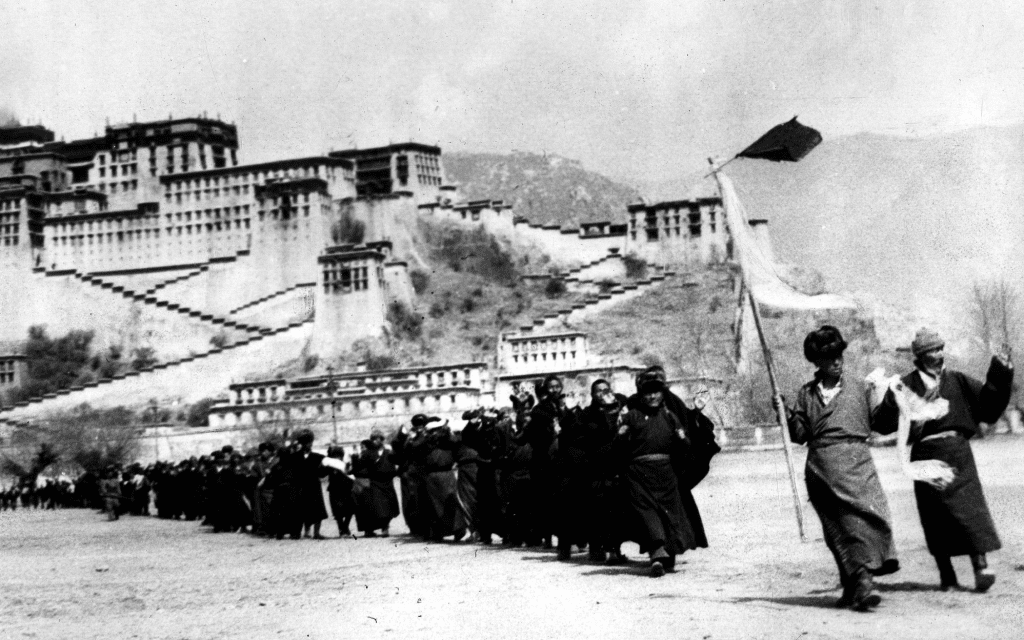
Tibetans march outside the Potala Palace during the uprising in 1959
In 1959 Tibetans took up arms to resist the Chinese occupation of their homeland. On 10 March 1959, the CCP responded with a brutal suppression, effectively subjugating Tibet and taking some of the first steps toward full colonisation of the region.
This day is remembered as Tibetan Uprising Day and has become a major rallying point for Tibetans to protest around. Large-scale protests against the Chinese occupation took place around 10 March in the 1980s and in 2008, as Beijing prepared to host the Summer Olympics.
Non-violence
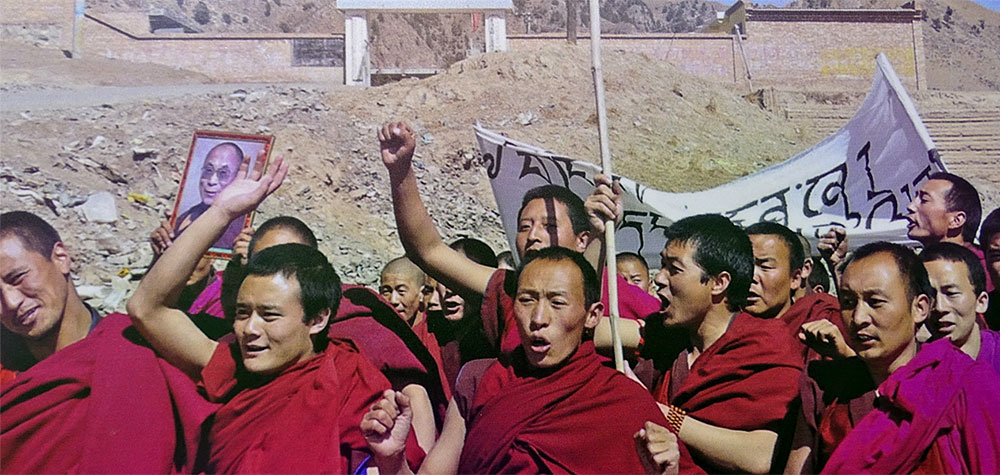
Protest in Tibet, 2008
Following the path of non-violence established by the Dalai Lama in the 1960s, the overwhelming majority of Tibetan protests are peaceful – consisting of marches, vigils, and sit-ins.
However, the Chinese authorities are growing increasingly intolerant of any form of dissent. As such, many of these peaceful protests are met with a violent response by Chinese police, and occasionally the military. Even when protesting peacefully and non-violently, Tibetans are putting themselves at serious physical risk.
Self-immolation
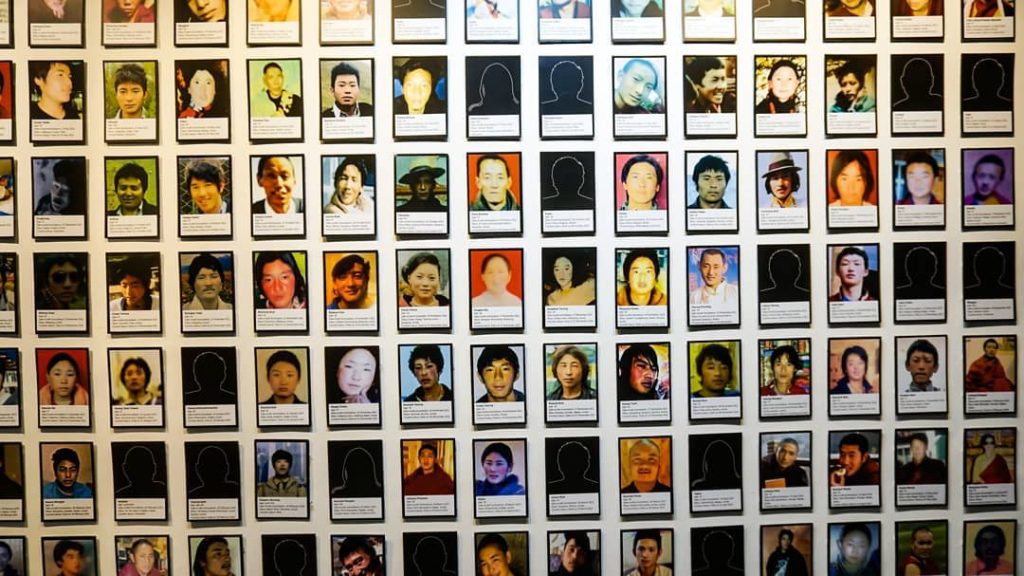
Photos of some of the 150+ Tibetans who have performed self-immolation protests, shown at the Tibet Museum, Dharamsala
Since 2009, some Tibetans have taken drastic action to protest against Chinese rule. Self-immolation, the deeply spiritual Buddhist practice of setting oneself on fire, is being used as a drastic and shocking form of protest.
Self-immolation protests peaked in 2012, where more than 80 took place. However, they still continue to this day. More than 150 Tibetans – students, teachers, mothers, and even children – have now self-immolated.
Artistic protest
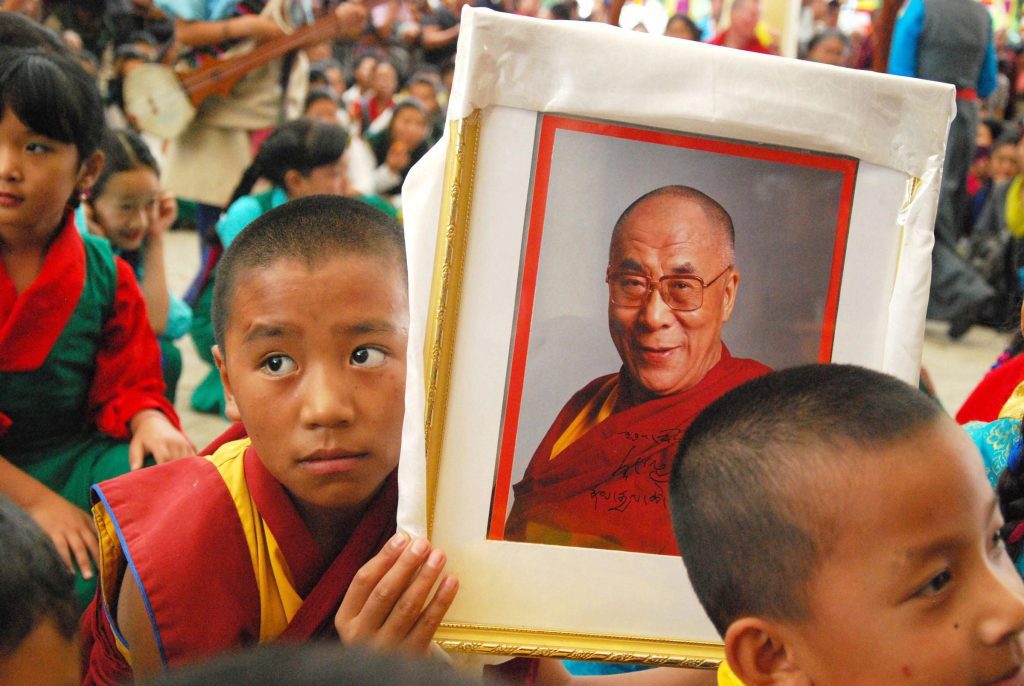
Tibetan boy holding a photo of the Dalai Lama. (Photo: Sanjay Baid/EPA)
As China’s cavalier censorship mechanisms increasingly seek to stifle all forms of independent creative expression, Tibet’s artists are rising to the challenge and using their talents to fight back.
From clothing adorned with the Dalai Lama’s banned image, and the Tibetan flag, to poems and songs celebrating Tibetan culture and nationhood. Since 2008 a number of authors have been imprisoned writing books criticising the CCP’s rule, and in 2009 two filmmakers were arrested for creating a documentary where Tibetans spoke frankly about the oppressive Chinese occupation.
Everyday resistance
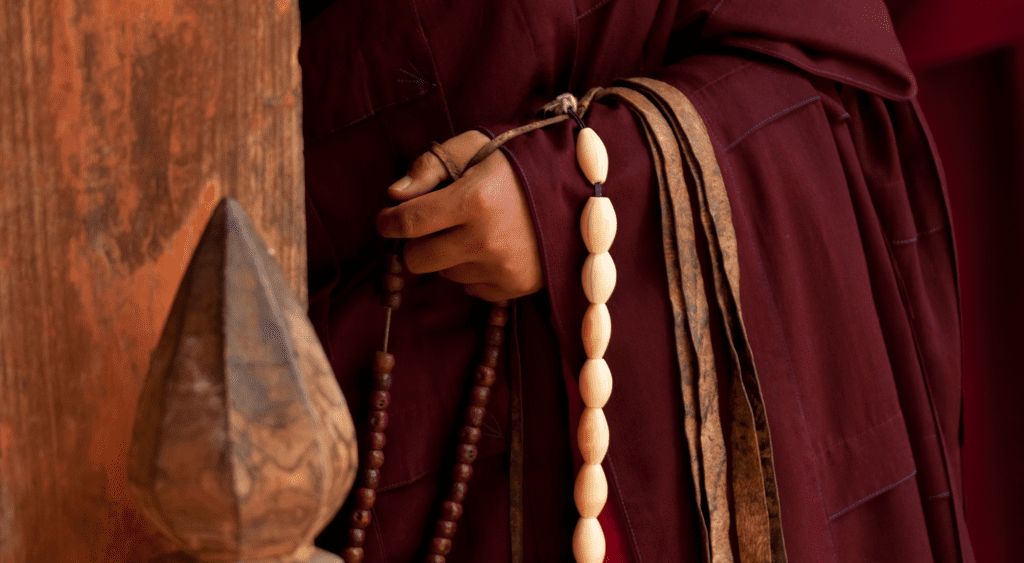
Acts of resistance don’t have to be loud and bold. Under the brutal Chinese regime, even the everyday and mundane act can be one of protest. Tibetans subtly protest by protecting their culture: sharing a prayer on the anniversary of Tibetan Uprising Day, secretly carrying pictures of the Dalai Lama or joining together to share the Tibetan language and culture with younger generations.
Where Tibetan culture itself is seen as a threat, keeping that culture alive and thriving is an act of protest against China’s occupation.
Information protest
The Chinese Communist Party goes to great lengths to ensure that the world does not know about their crimes and human rights abuse in Tibet. As the government’s technological capacity grows, and new, sophisticated, methods of espionage are developed, it becomes even more difficult to know what is happening in occupied Tibet.
Information is the most powerful tool the world has against the Chinese occupation of Tibet right now, and Tibetans go to great lengths, facing insurmountable risk, to ensure the world knows what is happening inside Tibet. Many have been imprisoned for sharing information to sources outside of Tibet such as the monk Yonten Gyatso, who faced seven years in prison for sending emails.
The CCP is incredibly paranoid about the reality in Tibet, and they make every effort to keep information inside the region. Chinese authorities strictly control all communications, sometimes causing total blackouts of telephone and internet connections following protests and around sensitive anniversaries, such as Tibetan Uprising Day.
This communications control extends to travel in Tibet. Diplomats, human rights observers, and foreign journalists are rarely allowed entry to Tibet and, when they are, their visits are carefully stage-managed by officials. As a result, Reporters Without Borders routinely ranks China as one of the least press-free countries in the world.
The information Free Tibet publishes about events and protests in Tibet comes through our research partner, Tibet Watch, which obtains and verifies the latest news directly from Tibet in ways that protect and secure the safety of its sources.
